Cheng-Hao Cai
VisionCoder: Empowering Multi-Agent Auto-Programming for Image Processing with Hybrid LLMs
Oct 25, 2024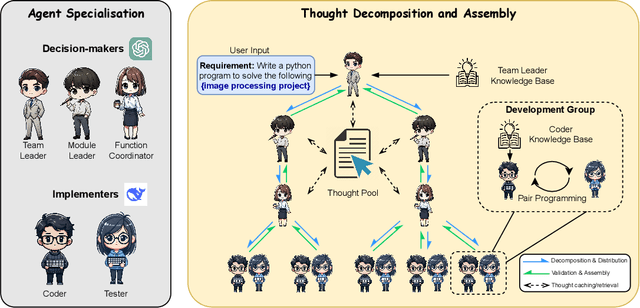



Abstract:In the field of automated programming, large language models (LLMs) have demonstrated foundational generative capabilities when given detailed task descriptions. However, their current functionalities are primarily limited to function-level development, restricting their effectiveness in complex project environments and specific application scenarios, such as complicated image-processing tasks. This paper presents a multi-agent framework that utilises a hybrid set of LLMs, including GPT-4o and locally deployed open-source models, which collaboratively complete auto-programming tasks. Each agent plays a distinct role in the software development cycle, collectively forming a virtual organisation that works together to produce software products. By establishing a tree-structured thought distribution and development mechanism across project, module, and function levels, this framework offers a cost-effective and efficient solution for code generation. We evaluated our approach using benchmark datasets, and the experimental results demonstrate that VisionCoder significantly outperforms existing methods in image processing auto-programming tasks.
An Empirical Study on End-to-End Singing Voice Synthesis with Encoder-Decoder Architectures
Aug 06, 2021



Abstract:With the rapid development of neural network architectures and speech processing models, singing voice synthesis with neural networks is becoming the cutting-edge technique of digital music production. In this work, in order to explore how to improve the quality and efficiency of singing voice synthesis, in this work, we use encoder-decoder neural models and a number of vocoders to achieve singing voice synthesis. We conduct experiments to demonstrate that the models can be trained using voice data with pitch information, lyrics and beat information, and the trained models can produce smooth, clear and natural singing voice that is close to real human voice. As the models work in the end-to-end manner, they allow users who are not domain experts to directly produce singing voice by arranging pitches, lyrics and beats.
Trainable back-propagated functional transfer matrices
Oct 28, 2017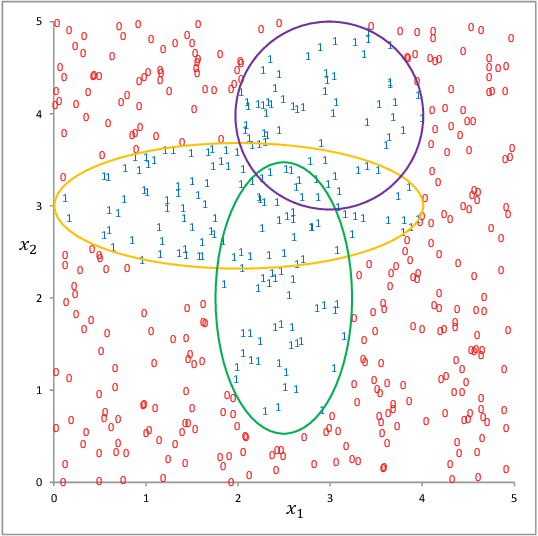
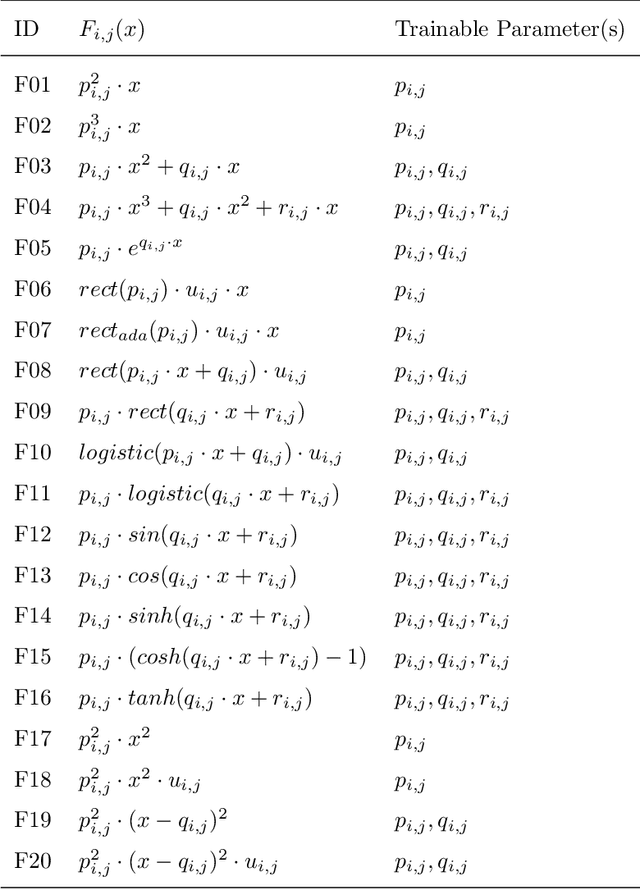
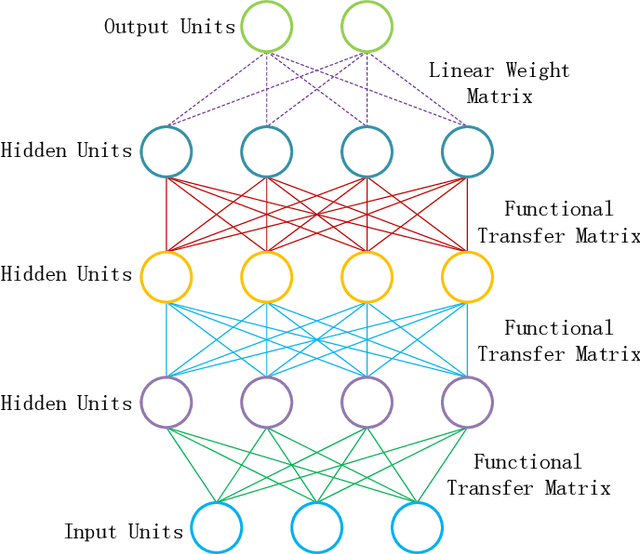
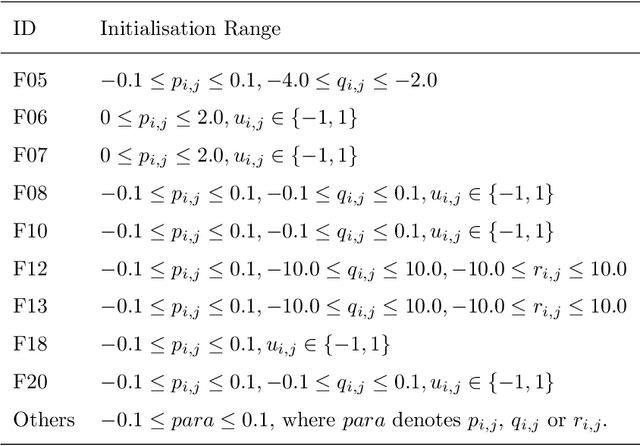
Abstract:Connections between nodes of fully connected neural networks are usually represented by weight matrices. In this article, functional transfer matrices are introduced as alternatives to the weight matrices: Instead of using real weights, a functional transfer matrix uses real functions with trainable parameters to represent connections between nodes. Multiple functional transfer matrices are then stacked together with bias vectors and activations to form deep functional transfer neural networks. These neural networks can be trained within the framework of back-propagation, based on a revision of the delta rules and the error transmission rule for functional connections. In experiments, it is demonstrated that the revised rules can be used to train a range of functional connections: 20 different functions are applied to neural networks with up to 10 hidden layers, and most of them gain high test accuracies on the MNIST database. It is also demonstrated that a functional transfer matrix with a memory function can roughly memorise a non-cyclical sequence of 400 digits.
* 39 pages, 4 figures, submitted as a journal article
SLDR-DL: A Framework for SLD-Resolution with Deep Learning
May 05, 2017


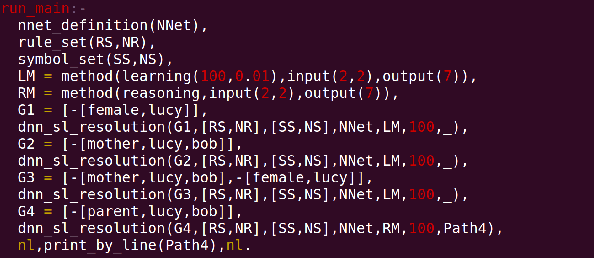
Abstract:This paper introduces an SLD-resolution technique based on deep learning. This technique enables neural networks to learn from old and successful resolution processes and to use learnt experiences to guide new resolution processes. An implementation of this technique is named SLDR-DL. It includes a Prolog library of deep feedforward neural networks and some essential functions of resolution. In the SLDR-DL framework, users can define logical rules in the form of definite clauses and teach neural networks to use the rules in reasoning processes.
Learning of Human-like Algebraic Reasoning Using Deep Feedforward Neural Networks
Apr 25, 2017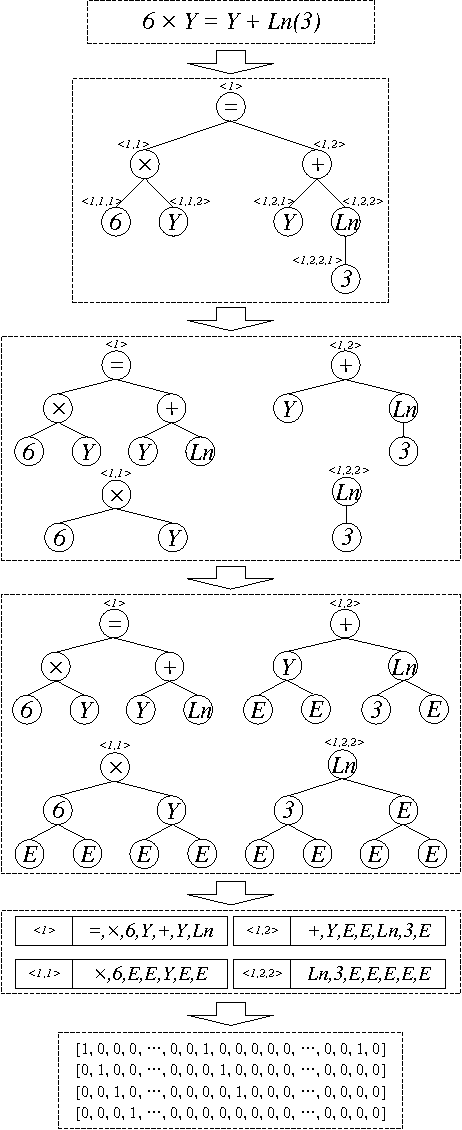
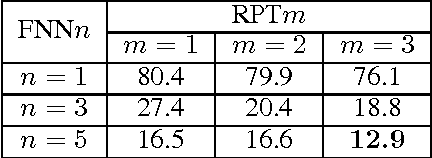
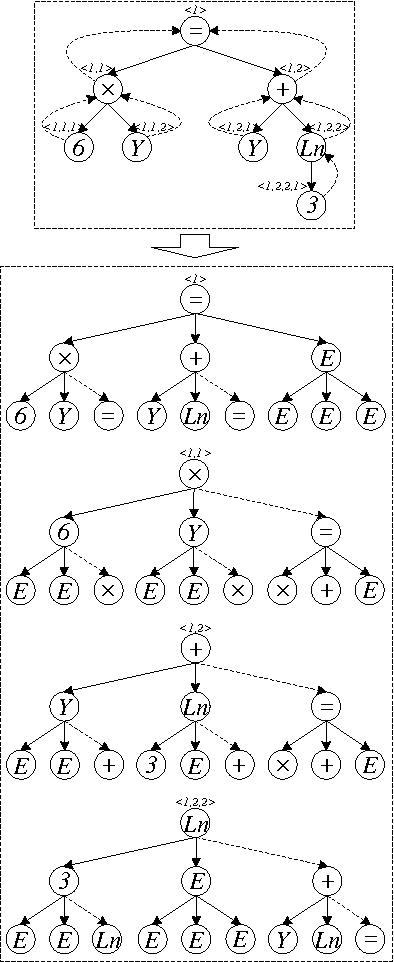
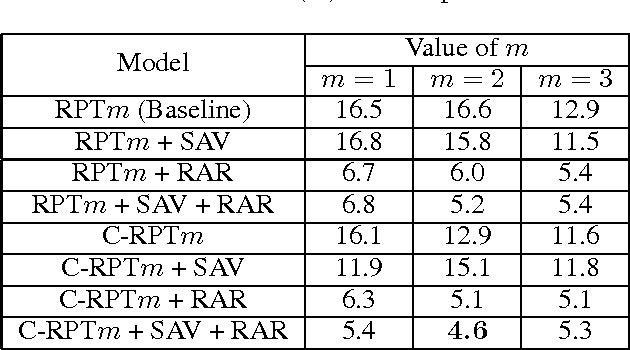
Abstract:There is a wide gap between symbolic reasoning and deep learning. In this research, we explore the possibility of using deep learning to improve symbolic reasoning. Briefly, in a reasoning system, a deep feedforward neural network is used to guide rewriting processes after learning from algebraic reasoning examples produced by humans. To enable the neural network to recognise patterns of algebraic expressions with non-deterministic sizes, reduced partial trees are used to represent the expressions. Also, to represent both top-down and bottom-up information of the expressions, a centralisation technique is used to improve the reduced partial trees. Besides, symbolic association vectors and rule application records are used to improve the rewriting processes. Experimental results reveal that the algebraic reasoning examples can be accurately learnt only if the feedforward neural network has enough hidden layers. Also, the centralisation technique, the symbolic association vectors and the rule application records can reduce error rates of reasoning. In particular, the above approaches have led to 4.6% error rate of reasoning on a dataset of linear equations, differentials and integrals.
 Add to Chrome
Add to Chrome Add to Firefox
Add to Firefox Add to Edge
Add to Edge